|
Cupcakes

Twitterature: The World's Greatest Books Retold Through Twitter

Indian Food Made Easy

Anjum's New Indian

I Love Curry
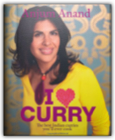
How to Photograph Absolutely Everything: Successful Pictures from Your Digital Camera

The Origami Sourcebook: Beautiful Projects and Mythical Characters - Step-by-Step

The Great Origami Book

Miss Masala

A Handbook of Origami: The Complete Practical Guide with Step-by-step Techniques and Over 80 Exciting Projects (A Handbook of)
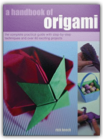
Rasoi New Indian Kitchen
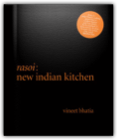
Beginning PHP4 Programming

PHP, of course, is introduced in the book, but there is also an approachable and effective introduction to programming in general. The conscientious tutorial on basic concepts like variables, keywords and flow control will give even beginners an understanding of the basics of writing programs. PHP, it turns out, is not only a great way to generate HTML dynamically, it's a very marketable skill. Web fundamentals like HTTP, HTML form variables, and managing session information using no less than four different techniques are explained thoroughly and effectively. You also find out how to install PHP and other tools on your system, with the assistance of plenty of screen shots. That's not to say that this book will cramp the style of more experienced developers. Some chapters delve into such important and advanced topics as database programming (with MySQL) and PHP's support for XML. One standout section demystifies the new support for objects and classes in PHP4. Basic topics like managing files and directories on the server, plus graphics processing, are addressed, of course, and a nifty sample program shows you how to build a Web-based text editor. Except for the final case study, a "URL directory manager" (akin to Yahoo) that is rather specialised, the examples are spot on, illustrating everyday programming tasks. You will also learn to generate e-mail with PHP, certainly a valuable skill to have. The appendix lists several hundred PHP functions in over 50 pages—a handy and useful feature. In all, Beginning PHP4 provides a strong choice for learning about one of today's most powerful and easy-to-use scripting languages. It is concise, fast-moving and thoroughly approachable. —Richard Dragan The Flying Book: Everything You've Ever Wondered About Flying on Airlines

Cakes and Slices

Bitesize Fish

Bitesize Chicken

Bitesize Meat

The Action Hero's Handbook

Well, sadly, not quite, but if you've ever wanted to know how to evade a MiG jet, negotiate a hostage crisis, communicate with extraterrestrials, execute a Jedi mind trick or even perform a Vulcan neck grip then this is the book for you. The trick with the latter, according to Karate expert Ray Geraneo, is to make a quick jab to the radial nerve in your victim's arm before mercilessly, if entirely logically, applying pressure to the brachial plexus. (In case you are left wondering where the blazes either of those are, the step-by-step instructions in each chapter are accompanied by snazzy, in-flight safety leaflet-style illustrations.) Ideally one would hope to avoid using the material proffered in the section headed "How to Take a Bullet"—"stand between shooter and target, face shooter and place chest in line of fire"—but there's plenty here that can be applied to everyday life. Let's face it, action heroes aren't the only ones who need to know "How To Pick Someone Up in a Bar" or "How to Stop a Wedding". And who can tell; the section "How to Climb Down Mount Rushmore" might just come in handy one day after all. —Travis Elborough Attack of the Unsinkable Rubber Ducks

The Da Vinci Code

The duo become both suspects and detectives searching not only for Neveu's grandfather's murderer, but also the stunning secret of the ages he was charged to protect. Mere steps ahead of the authorities and the deadly competition, the mystery leads Neveu and Langdon on a breathless flight through France, England and history itself. Brown has created a page-turning thriller that also provides an amazing interpretation of Western history. Brown's hero and heroine embark on a lofty and intriguing exploration of some of Western culture's greatest mysteries—from the nature of the Mona Lisa's smile to the secret of the Holy Grail. Though some will quibble with the veracity of Brown's conjectures, therein lies the fun. The Da Vinci Code is an enthralling read that provides rich food for thought. —Jeremy Pugh, Amazon.com Digital Fortress

Cringe: Toe-Curlingly Embarrassing Teenage Diaries, Letters and Bad Poetry

A Short History of Nearly Everything

In fact, it dawned on him that "I didn't know the first thing about the only planet I was ever going to live on". The questions multiplied: What is a quark? How can anybody know how much the Earth weighs? How can astrophysicists (or whoever) claim to describe what happened in the first gazillionth of a nanosecond after the Big Bang? Why can't earthquakes be predicted? What makes evolution more plausible than any other theory? In the end, all these boiled down to a single question—how do scientists do science? To this subject Bryson devoted three years of his life, reading books and journals and pestering the people who know (or at least argue about it); and we non-scientists should be pretty grateful to him for passing his findings on to us. Broadly, his investigations deal with seven topics, all of enormous interest and significance: the origins of the universe; the gradual historical discovery of the size and age of the earth (and the beginnings of the awesome notion of deep time); relativity and quantum theory; the present and future threats to life and the planet; the origins and history of life (dinosaurs, mass extinctions and all); and the evolution of man. Within each of these, he looks at the history of the subject, its development into a modern discipline and the frameworks of theory that now support it. This is a pretty broad brief (life, the universe and everything, in fact), and it's a mark of Bryson's skill that he is able to carve a clear path through the thickets of theory and controversy that infest all these disciplines, all the while maintaining a cracking pace and a fairly judicious tone without obvious longueurs or signs of haste. Even readers fairly familiar with some or all of these areas o! f discourse are likely to learn from A Short History. If not, they will at least be amused—the tone throughout is agreeable, mingling genuine awe with a mild facetiousness that often rises to wit. One compelling theme that appears again and again is the utter unpredictability of the universe, despite all that we think we know about it. Nervous page-turners may care to omit the sensational chapters on the possible ways in which it all might end in disaster—Bryson enumerates with cheerful relish the kind of event that makes you want to climb under the bedclothes: undetectable asteroid colliding with the earth; superheated magma chamber erupting in your back garden; ebola carrier getting off a plane in London or New York; the HIV virus mutating to prevent its destruction in the mosquito's digestive system. Indeed, the chief theme of this sprightly book is the miraculous unlikeliness, in a universe ruled by randomness, of stability and equilibrium—of which one result is ourselves and the complex, fragile planet we inhabit. —Robin Davidson The Blue Planet
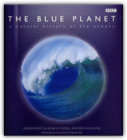
The Blue Planet is a reminder of what we know and what we still don't know about the oceans and is a timely reminder of how fragile its ecosystems can be. We still know more about the surface of the moon than we do about the floor of the oceans. As David Attenborough reminds us in his introduction the highest peaks on Earth are still unclimbed and there are still thousands, maybe even millions, of animal species that remain undiscovered because all are hidden under the waves of the oceans. People have walked on the surface of the moon, nobody has walked on the floor of the deep ocean and probably never will. Looking at a book such as this you can get some idea of the thrill of exploring the last unknown section of our planet. And since 70 per cent of Earth's surface is covered in water, there is still plenty left to find out about. The story the book tells is so momentous that much of the scientific background has to be condensed. For the general reader, however, this is an excellent and up-to-date introduction. Martha Holmes, one of the three authors is a marine biologist and all have worked in the Natural History Unit, the jewel in the crown of BBC TV, and so have been exposed to most of the researchers whose work has helped inform the series and the book. There is a useful glossary and index but, disappointingly, there is no Further Reading list for those who want to find out more. The Blue Planet will no doubt encourage a whole new generation of marine biologists and oceanographers.— Douglas Palmer The Rule of Four

Pop-up Origamic Architecture

Foundation Maths (Essential Maths For Students)

Learn Objective-C on the Mac

Pub Tricks and Brain Teasers
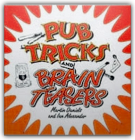
The God Delusion

The Camping Book
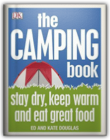
Dreamweaver MX: PHP Web Development (Tools of the Trade)

How Long is a Piece of String?: More Hidden Mathematics of Everyday Life

The Neverending Story

Origami from Angelfish to Zen

How to Dunk a Doughnut: Using Science in Everyday Life

Web Pages That Suck: Learn Good Design by Looking at Bad Design

Planet Earth: As You've Never Seen It Before
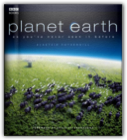
Perfect Exposure: The Professional Guide to Capturing Perfect Digital Photographs

Blink: The Power of Thinking Without Thinking

Gladwell hopes to convince us that our snap judgements and first impressions can be educated and controlled so instead of merely praising the mysterious process of instinct and intuition he is interested in those moments when our instincts betray us, the situations where our powers of rapid cognition can go awry, where we fail to read the signs. Most disturbing of all is the degree to which culturally determined preconceptions and prejudices control us. Without reducing matters to racism and sexism Gladwell shows us that there are facts about people’s appearance—their size or shape or color or sex—that can trigger a very similar set of powerful associations which explains why utter mediocrities (such as U.S. President Warren Harding) can sometimes end up in positions of enormous responsibility; or why tall people earn substantially more than their shorter colleagues; or why car salesmen unconsciously charge prices according to race and gender. Gladwell’s conversational prose style is concise, informative, accessible and entertaining. The stories, scientific findings and psychological tests are consistently surprising whether he is dealing with speed-dating, record promotions, police shoot-outs, the human face, or the reasons doctors get sued. —Larry Brown END Bart Simpson's Guide to Life: A Wee Handbook for the Perplexed

Ajax and REST Recipes: A Problem-Solution Approach (Expert's Voice)

Photojojo!

Origami: The Art of Paperfolding

Secrets of Origami: The Japanese Art of Paper Folding (Origami)

Origami Step by Step

A Brief History of Time: From the Big Bang to Black Holes

Origami Flowers

Children's Letters to God

La communication par l'objet en 140 maquettes à plier
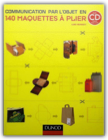
High Fidelity

A Long Way Down

Slam

The Kite Runner

Narrated by Amir, a 40-year-old novelist living in California, The Kite Runner tells the gripping story of a boyhood friendship destroyed by jealousy, fear, and the kind of ruthless evil that transcends mere politics. Running parallel to this personal narrative of loss and redemption is the story of modern Afghanistan and of Amir's equally guilt-ridden relationship with the war-torn city of his birth. The first Afghan novel to be written in English, The Kite Runner begins in the final days of King Zahir Shah's 40-year reign and traces the country's fall from a secluded oasis to a tank-strewn battlefield controlled by the Russians and then the trigger-happy Taliban. When Amir returns to Kabul to rescue Hassan's orphaned child, the personal and the political get tangled together in a plot that is as suspenseful as it is taut with feeling. The son of an Afghan diplomat whose family received political asylum in the United States in 1980, Hosseini combines the unflinching realism of a war correspondent with the satisfying emotional pull of master storytellers such as Rohinton Mistry. Like the kite that is its central image, the story line of this mesmerizing first novel occasionally dips and seems almost to dive to the ground. But Hosseini ultimately keeps everything airborne until his heartrending conclusion in an American picnic park. —Lisa Alward, Amazon.ca A Thousand Splendid Suns

Curry Easy

VBA and Macros for Microsoft Excel

Creative Origami

Origami for the Connoisseur

DOM Scripting: Web Design with JavaScript and the Document Object Model
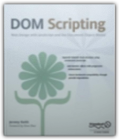
Complete Origami

Simple Indian: The Fresh Tastes of India's New Cuisine

Origamido: The Art of Paper Folding

Orgami in Action: Paper Toys That Fly, Flap, Gobble, and Inflate!
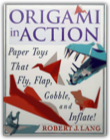
The Complete Book of Origami

Origami Insects and Their Kin
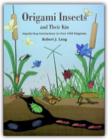
Origami Design Secrets: Mathematical Methods for an Ancient Art

Origami Zoo: An Amazing Collection of Folded Paper Animals

Total Immersion
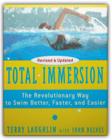
Nigella Express

Pets with Tourette's

The Lion, the Witch and the Wardrobe (Chronicles of Narnia)

This stunning version of the classic The Lion, The Witch and the Wardrobe, illustrated by Christian Burningham, comes with a special recording of the story which features a full production and specially composed music which transports the listener straight to the heart of Narnia. An absolute must for Narnia fans, and an excellent way of introducing the magical story to a new generation of readers. —Susan Harrison Why Do Men Have Nipples?

The Complete Idiot's Guide to Handwriting Analysis

DIY: Design it Yourself (Design Handbooks)
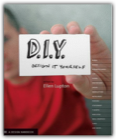
"FHM" Presents the Best... True Stories

The Hummingbird Bakery Cookbook

The Hummingbird Bakery Cake Days: Recipes to make every day special
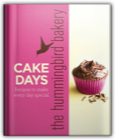
Beginning iPhone Development: Exploring the iPhone SDK

Best of Indian Delights

Indian Delights
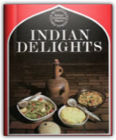
Animal Origami for the Enthusiast

Origami Sculptures

Prehistoric Origami

African Animals in Origami

Origami Inside-out

North American Animals in Origami
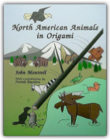
Mythological Creatures and the Chinese Zodiac Origami

Bringing Origami to Life
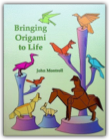
Plethora of Polyhedra in Origami

Origami Sea Life

The Time Traveler's Wife

The Darwin Awards: The Official Darwin Awards: 180 Bizarre True Stories of How Dumb Humans Have Met Their Maker

The Naked Chef

The Return of the Naked Chef

So what do we get? First off, ingredient perfect pitch. Seared scallops, grilled squid, baked beetroot and squash, roast Jerusalem artichokes, braised lamb shanks, crispy sea bass, carpaccio of beef, pancetta, lots of herbs, goats' cheese, Asian influences—all exactly what everybody seems to want to cook at the moment. There isn't perhaps anything blindingly original in his recipes, but the combinations are nudged this way and that to maximum effect: "Potato and Jerusalem Artichoke Soup with Thyme, Mascarpone and Hazelnuts", "Risotto of Radicchio, Smoky Bacon, Rosemary and Red Wine", "Braised Pigeon Breasts with Peas, Lettuce and Spring Onions", "Orange and Polenta Biscuits" give something of the flavour of the style. It's modern, fresh and not in any way intimidating. On the minor matter of personal appeal, where Oliver really scores is the intriguing contrast (the "tension", as literary critics would say) between the skilled and imaginative professional on the one hand, and the laddish Essex boy on the other, who always manages to look as if he's just crawled from under a companionable duvet. This book will scarcely need recommending, but it is a highly appealing and skilful package. —Robin Davidson Cook with Jamie: My Guide to Making You a Better Cook

Jamie's Ministry of Food: Anyone Can Learn to Cook in 24 Hours

Jamie's 30-Minute Meals

Jamie's Great Britain

In Defence of English Cooking (Pocket Penguins 70's)

Shite's Unoriginal Miscellany

Home Cooking Made Easy

Microsoft Office All in One for Dummies

Goodfellas

Pileggi's book was written with Henry Hill, whose life it describes. The narrative switches between Pileggi, Hill, and Hill's wife Karen, all delivered with the smooth action of a well-polished Magnum. It proves utterly compelling, breathlessly serving up an action-fuelled life of criminal excess with Henry starting as an aspirant 12-year-old errand runner ("To be a wiseguy was better than being president of the United States. To be a wiseguy was to own the world"), and progressing to such a status within the Mob that when he is finally nailed he turns Federal witness to implicate his former cronies, a move that represents his only chance to save his family's necks. The irony for Hill is that his fictionalised life story has been seen by millions, but he cannot tell anyone without jeopardising his new identity, which means he gets "to live the rest of my life as a shnook". As a source the book runs very close to the film, and someone who know the film will find it hard not to picture Scorseses's stylised realisation as they read, while those who don't will discover a grittily related, authentically grim amorality tale of a life shot through with brutality and survivalist scheming that stands on its own without the Big Screen treatment. Surprisingly bleak. —David Vincent Textpattern Solutions: PHP-Based Content Management Made Easy

The Science of Discworld

Dreamweaver 4 Ultradev Studio Factory

Gordon Ramsay's Sunday Lunch: And Other Recipes from the "F Word": And Other Recipes from "The F Word"

Gordon Ramsay Makes It Easy

Gordon Ramsay's Fast Food: Recipes from "The F Word"

Olive: 101 Comfort Food Classics

Sams Teach Yourself iPhone Application Development in 24 Hours

The Encyclopedia of Origami: The Complete, Fully Illustrated Guide to the Folded Paper Arts

The Origami Bible
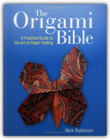
Origami Rockets
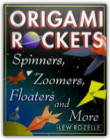
Why Don't Penguins' Feet Freeze?: And 114 Other Questions

Origami to Astonish and Amuse
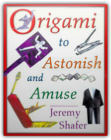
Fun Web Pages with Javascript

Baking Magic
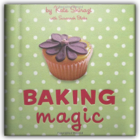
Head First Java

Fermat's Last Theorem

Max Hits: Building Successful Websites (E-pro S)

Slocombe dispenses a lot of hard-earned wisdom. Rather than teaching all of HTML, he gives a simple tutorial that gets across the main idea of how tags work and then sends the reader off to look at source code, consult online resources and/or use an HTML editor such as Homesite. When discussing how wide a site should be, he gets right to the crux of the problem: should a Web designer worry about how the site looks on every monitor from plasma to PDA? What are the pros and cons of specifying the table tag width at 100%? Again, he points the way to places online where readers can check how their site displays in different browsers and resolutions. Pros and cons come into play in most Web site design decisions. For example, developers must weigh design versus download time or latest technology versus browser compatibility. These decisions are unique to each site and Slocombe helps readers make informed choices. His advice can be as simple as hitting the auto button on the levels panel in Photoshop to clear up a muddy photograph or as complex as delivering appropriate content to your audience. This is a hip book that looks at all the details involved in making a Web site. It's well written, well designed, well coded and gets lots of attention from search bots. And it clues readers into some of the coolest sites existing on the Web today. It may just be what you need to get off to a good start with your own Web site. —Angelynn Grant Dawkins vs. Gould: Survival of the Fittest

Fantastic Folds: Origami Projects

Flash Math Creativity

Passion Origami

The Air Pilot's Manual: Flying Training Vol 1 (Air Pilots Manual 01)

The End Of Mr. Y

The Beano Annual 2008

Concise Atlas of the World - The Times 10th Edition
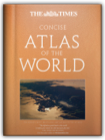
The Silmarillion

In the beginning Eru, the One, who in the Elvish tongue is named Ilúvatar, made the Ainur of his thought; and they made a great Music before him Tolkien wrote the heart of this material very early in his career, and continued to work on it throughout his life. It fell to his son, Christopher Tolkien, to edit it into book form, and such proved the unquenchable public appetite that he subsequently oversaw 12 volumes of The History of Middle-Earth. This edition features 20 highly evocative colour plates by Ted Nasmith, themselves worth the price of admission, while reinforcing the sense of a historical work are genealogical tables, an extensive index, appendix and colour map. Far removed from the genial style of The Hobbit, this is Tolkien at his most formal, his prose austere, poetically beautiful, his storytelling capturing the epic scale, high drama and melancholy wonder of myth. These stories of elves and heroes and old gods are quite literally the foundation of the entire modern fantasy-publishing revival, and are therefore essential reading. —Gary S. Dalkin The Hobbit

This book is the predecessor to Tolkien's masterpiece, The Lord of the Rings, and though that trilogy can be thoroughly enjoyed without first reading The Hobbit, much that happens in the later novels is foreshadowed here. A word of caution, however: as Bilbo discovers early on, travel and adventure are addictive things; embark on this journey to the Lonely Mountain with Tolkien's reluctant hero, and you might not be able to stop there. And the road taken to the distant mountains of Mordor in the ensuing trilogy is an even more perilous one. PHP Cookbook (Cookbooks (O'Reilly))

Wild Origami

PHP Advanced for the World Wide Web (Visual QuickPro Guides)

PHP and MySQL for Dynamic Web Sites: Visual QuickPro Guide

PHP and MySQL for Dummies

The Art and Science of Web Design

Jeffrey Veen, an established design guru and the creator of HotWired.com, has authored a carefully structured look into the undercurrents of Web design. Organised around the key development topics, the book is laden with a historical background of standards, features and trends. Yet the topics are timeless and central to good Web engineering, so it's space well spent. The mix of expert opinion and historical explanation combine for a well-rounded reader experience. Issues such as interface consistency are explored within the unique paradigm of the Web, with the assistance of a sidebar to explain what "above the fold" means. Performance is discussed with an unusual twist: ie., how the current constraint on Web-browsing performance is actually good since it fosters creativity and more elegant design and development. This, beyond the usual design tips, is what makes this book special. Art & Science stays at a reasonably high altitude, dwelling not on the fine details of browser compatibility but rather on the key areas designers need to be concerned about. With his years of experience and knowledge of the legacy of traditional publishing, Veen has provided great perspective on the dicey work of Web designers. —Stephen W. Plain Seres De Ficción

The Three Sisters Indian Cookbook: Delicious, Authentic and Easy Recipes to Make at Home
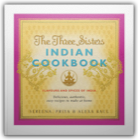
Creative HTML Design.2 (with CD-ROM)

Creative HTML Design.2 covers basic page structure, images and compression, colour, links, buttons, transparency, typography, organisation, style sheets, navigation, rollovers, forms and other issues. (A good description of the first edition, including a sample chapter, can currently be found at www.lynda.com; this new edition will most likely be detailed there soon as well. They also maintain an errata section, important for any book that includes code.) Lynda Weinman's specialty is her friendly yet tech-savvy teaching style—there aren't many who can walk readers through the minutiae of client-side image map coordinates and not confuse them (or bore them to tears). Brother Gary, an engineer and programmer, presumably provides the finer points of HTML, plus the JavaScript and CGI scripts. The book offers all the good aspects of Weinman's other popular books—text that's affable yet clear, with a view to anticipating problems beginners may stumble into, lesson projects that are neither too complex nor aesthetically amateur, and a book layout that doesn't crowd pages but rather serves up mini-steps and clearly captioned screenshots in easily digested morsels. With editors that do it all like Dreamweaver and GoLive, why would a non-tech-head Web designer want to learn HTML? As Weinman explains, "The advantage of knowing and understanding HTML is that you are in better control of knowing what is possible and what is not." Even if you use an HTML editor, you will at some point have to go "under the hood" and fix troubled code and even a little familiarity can make a big difference in relieving Web design stress. —Angelynn Grant Wings and Things: Origami That Flies
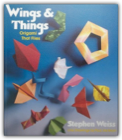
Origami Skeleton of Tyrannosaurus Rex

|


Sajid Nawaz Khan
Collection Total:
752 Items
752 Items
Last Updated:
Aug 2, 2012
Aug 2, 2012


 Made with Delicious Library
Made with Delicious Library